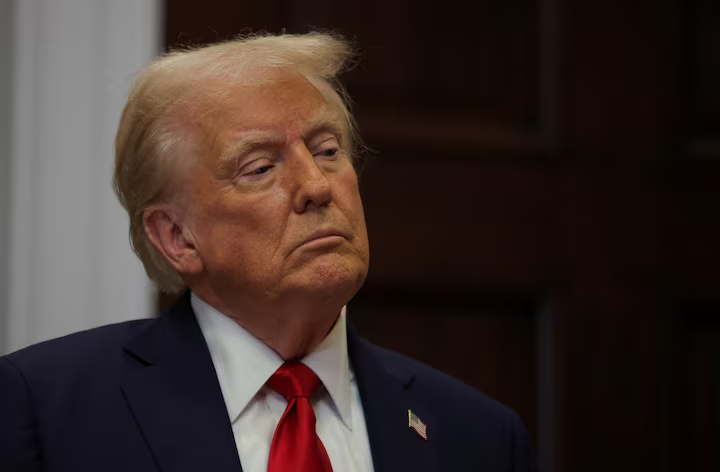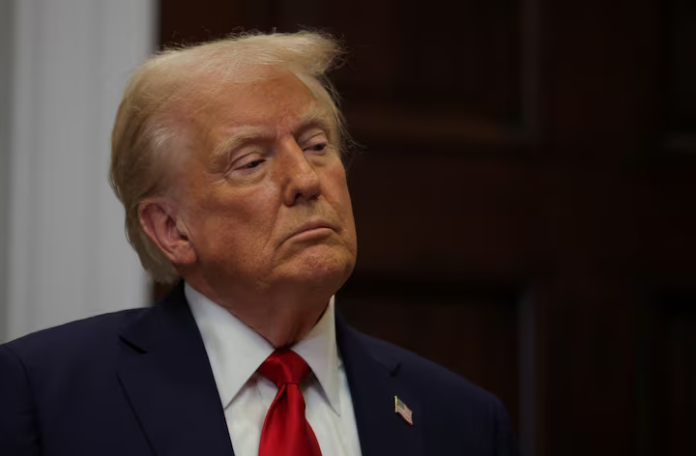U.S. President Donald Trump has reignited global trade tensions by threatening new tariffs on imports from the European Union, China, Canada, and Mexico. Speaking at the White House just a day after assuming office, Trump outlined a sweeping trade agenda that could reshape international commerce and heighten economic uncertainty.
Trump accused the EU of exploiting the U.S. through substantial trade surpluses, signaling a desire to impose tariffs to rectify the imbalance. “The European Union is very, very bad to us,” he said. “So they’re going to be in for tariffs. It’s the only way… you’re going to get fairness.”
Meanwhile, Trump also proposed a 10% punitive tariff on Chinese imports, blaming China for the influx of fentanyl, an opioid often linked to overdose deaths in the U.S. He alleged that the drug, along with its precursor chemicals, is being smuggled through Mexico and Canada into the U.S. He further tied this issue to his broader immigration crackdown, which includes a new ban on asylum seekers.
Deadline Looms for New Tariffs
Trump set a February 1 deadline for a 25% tariff on imports from Canada and Mexico unless the two countries take stricter measures to stop illegal migrants and illicit drugs from crossing into the U.S.
Peter Navarro, White House trade adviser, defended the move, stating, “The reason why he’s considering 25, 25 and 10 percent on Canada, Mexico, and China is because 300 Americans die every day from fentanyl overdoses.”
Despite the tough rhetoric, financial markets welcomed Trump’s measured pace. U.S. stocks rallied, with the S&P 500 reaching its highest level in a month. Analysts suggest the president is adopting a more cautious approach to secure a solid legal foundation for his policies.
Broader Trade Reviews Ordered
Trump also signed a trade memorandum instructing federal agencies to investigate U.S. trade deficits and recommend remedies by April 1. The investigation will focus on unfair trade practices, currency manipulation, and the role of low-value shipments in facilitating illicit imports of fentanyl precursors.

The review could pave the way for sweeping reforms, including supplemental tariffs and changes to the $800 duty-free exemption for low-value imports. This initiative is seen as part of Trump’s larger strategy to pressure trade partners into negotiations that favor the U.S.
Global Reactions
China responded diplomatically, emphasizing its willingness to maintain dialogue and cooperation with the U.S. “We believe there is no winner in a trade war or tariff war. China will always firmly safeguard its national interests,” said Mao Ning, a spokesperson for the Chinese foreign ministry.
Mexico and Canada also struck a conciliatory tone. Mexican President Claudia Sheinbaum reaffirmed her country’s sovereignty while rejecting suggestions of renegotiating the U.S.-Mexico-Canada free trade agreement before 2026. However, farmers in the U.S. have expressed concerns over potential retaliatory tariffs disrupting agricultural exports to Mexico and Canada.
Implications for Global Trade
Trump’s aggressive stance has raised concerns about the future of global trade. While his cautious rollout of new tariffs offers temporary relief, his administration’s focus on reshaping trade dynamics could lead to long-term economic shifts.
As trade tensions simmer, industries and markets are left grappling with uncertainty. Will Trump’s policies bring the fairness he promises, or will they ignite further economic disruptions? Only time will tell.



